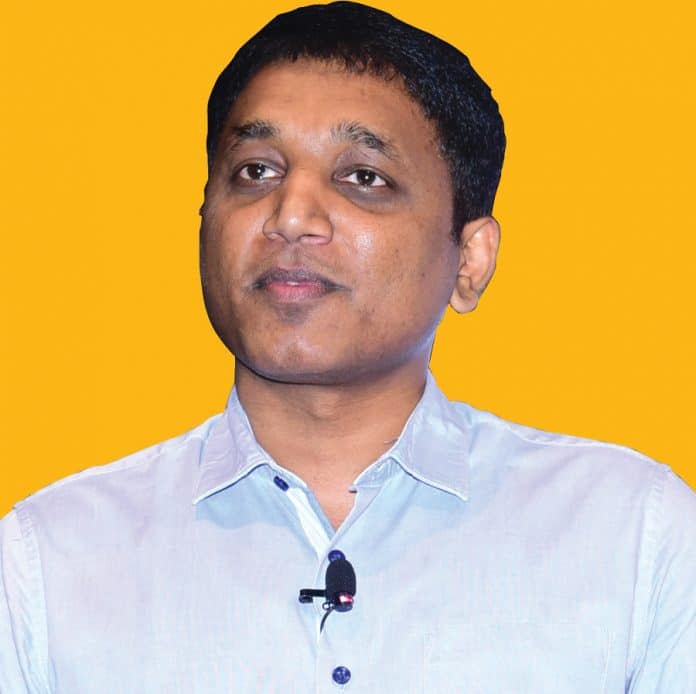Artificial Intelligence (AI) has the power to transform our lives. Today, more and more AI systems are being open sourced, which is expected to lead to many more interesting innovations. To understand the potential of AI and the role open source plays in it, Ankita K.S. from the EFY Group chatted with Sandeep Alur, director – partner engagements, Microsoft, at Open Source India 2018. Excerpts follow…
Q How do you think open source has evolved over the past few years in India?
Two things are happening mainly. One is the cultural shift that is happening because of the growth in the number of startups and entrepreneurs in the country. These startups innovate and build intellectual properties (IPs), and are starting to open source a few endpoints with the intent to seek contributions from the community, to make it better. Because of this culture, open source has taken off in a big way. Second is the push from the global IT giants in the industry and from the academia. These are the two driving factors that have led to the popularity of open source in the past few years in the country.
Q Personally, what is your favourite open source technology?
I love machine learning (ML). In fact, I have been working on some projects for which I wanted open source code for certain key functionalities. It was already available on GitHub (open sourced), so it was an easy start getting into what we wanted to build. My favourite programming language would be Python due to its dominant community backing, and the fact that a bulk of what we need for ML is available via OS libraries. So, if you want to work on AI/ML and you are good at Python, you are at the starting line already.
Q At which stage of AI development is the industry today?
AI is no more a buzzword. It has been around for decades and it has even been taught in academia for a long time. We only talk about it today because machines have reached human parity on a few things like computer vision, speech, etc. Machines are getting close to or better than human beings in doing certain things. It is the only stream that will help us predict or prescribe and take timely action. It is like new age astrology. AI has already made a backdoor entry into most of the industries, in various forms. As consumers, you may eventually experience it as the features/service mature.
Q What is ubiquitous computing and how is it changing things today?
Ubiquitous computing enables computing anywhere, anytime and on any device. For example, let’s imagine that I am listening to music in my car and when I reach home, I want the same music to continue playing automatically on another device in the house. Now, with ubiquitous computing, I need not instruct or tell a device at home what to do. This is how seamless we all want our lives to get.
Today, if you look at any autonomous vehicle, it has been trained and tested for millions of miles on the road. It has been trained to the extent that if it comes to the zebra crossing, it will stop and wait for people to cross. But is it possible to predict what people may be thinking while crossing the road? Will they decide to stop midway, while crossing? That is the next level of challenge in making computers think and predict such actions too.
“If you want to work on AI/ML and you are good at Python, you are at the starting line already.”
Q What are the various fields around AI where innovation is happening?
The base promise of AI is to make computers behave like humans by making them understand the world. This can be done in two ways — one is perception and the other is cognition. Perception is related to vision and speech, while cognition is related to language and knowledge. Predominantly, when you look at AI, the innovations and developments are happening around all the four aspects—vision, speech, knowledge and language.
The key to the success of AI is data. Data volumes are expected to increase to 44ZB in 2020. There is a study that talks about companies willing to take up AI use cases, but states that the unavailability of data is a dampener. On the other hand, one of the studies by Gartner indicates that 80 per cent of data that is required for an enterprise to develop AI appears to exist within the company itself. These are interesting times, with innovations happening all around, and AI as a field is emerging at a very fast pace.
Q Can you briefly tell us how Microsoft is helping the open source community?
Microsoft has been contributing to open source for many years, but we are probably only talking about it now. You must have heard recently that Microsoft joined the Open Invention Network (OIN), an open source patent group designed to help protect Linux from patent lawsuits. With this, over 60,000 patents were open sourced and made available to OIN members.
Ahead of any other contributor, even before the announcement of Microsoft acquiring GitHub, the company has been a leading contributor to the OSS world. There are interesting times as we continue to contribute as much as we can to the open source community.
Q How helpful did you find OSI 2018 to open source contributors?
This is the third year I am attending OSI and each year, I see more active participation from the true believers of OSS. I do not see any other conference in India, where open source is front and central. I love OSI because this is one platform where you get to interact with many who are already in the open source world and want to understand more about Microsoft’s stance and contribution. It is also a great platform to get genuine feedback from the industry.













































































